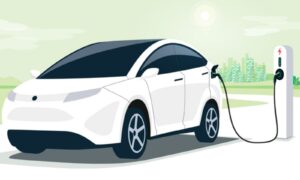Key points
- The United States will need a massive investment in EV charging infrastructure in the coming years.
- Home charging will be the most important form of EV charging, but there will also be a need for public charging infrastructure.
- Long-distance DC fast charging networks will be important for enabling long-distance travel, but they may not be profitable.
- The location of EV charging infrastructure is critical, and it will need to be tailored to the specific needs of different regions.

Details
The report by the National Renewable Energy Laboratory (NREL) sheds light on the infrastructure challenges the United States will face in supporting the widespread adoption of electric vehicles (EVs) by 2030. The key findings of the report include the following infrastructure requirements to support 33 million EVs by 2030:
- 182,000 publicly accessible fast charging ports: These are necessary for long-distance travel, ride-hailing electrification, and to serve those without access to residential charging.
- 1 million Level 2 charging ports at publicly accessible locations: This includes high-density neighborhoods, office buildings, and retail outlets.
- 26 million Level 1 and Level 2 charging ports at privately accessible locations: This includes single-family homes, multifamily properties, and workplaces.
Importance of Home charging
The report acknowledges the importance of home charging, with about 90% of EV charging happening at home. While fast charging is essential for travelling long distances, a significant portion of Level 3 (fast charging) infrastructure (65%) will also be needed for people who cannot access reliable home charging. Professional drivers will make up 21% of the Level 3 charging needs, and long-distance driving will only account for 14% of Level 3 charging needs.
Funding
Regarding funding, the estimated spending required to develop the necessary charging infrastructure is between $31 and $55 billion. However, only around $23.7 billion has been announced by governments, private charging providers, and automakers as of March 2023. While there is progress, the funding gap remains significant.
The report emphasizes that the EV transition will vary from place to place and depend on various factors. Thus, the spending and strategy for charging infrastructure will differ based on how quickly different regions adopt EVs and how many EVs each area needs to support.
Challenge
One notable challenge mentioned in the report is the profitability of operating national DC fast charging networks, especially in rural areas. Even with enough stations to support long-distance drives for 50% EV adoption, many rural stations are likely to be underutilized during peak charging times. Minimizing spending on these low-utilization routes will be crucial to making the overall network financially sustainable.
Conclusion
In conclusion, the report provides a roadmap and important insights for the necessary EV charging infrastructure to support the future growth of electric vehicles. While there are challenges ahead, having a clearer understanding of the infrastructure requirements is a positive step towards achieving widespread EV adoption.
NREL and Cleantechnica

































